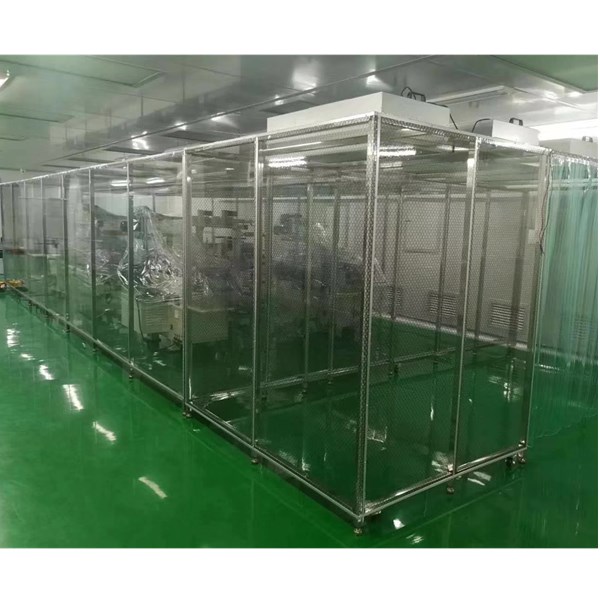In this paper, the clean room’s classification is analyzed according to different situations, which can help people better understand clean rooms.

1. According to the airflow clean room’s classification are as follow:
(1) Laminar flow type:
Airflow with parallel flow lines, uniform flow velocity, and single direction flows through the room work area. It is divided into vertical laminar flow and horizontal laminar flow.
Vertical laminar flow: The high-efficiency filter is installed on the roof, the entire roof is a filter layer, the airflow is vertically downward, and the return air is located on the plane of the floor.
Horizontal laminar flow: The filter is installed on the side wall of the patient’s foot end, and the airflow is blown horizontally; the return air outlet is located on the roof of the opposite side of the wall.
When the horizontal air flow, the operator’s body or the towel to block the airflow affects the cleanliness of the operating area; when the vertical air flow, the incision in the upper wind direction of the operator’s head also increases the chance of bacterial contamination, and the investment is high. Due to gravity, the dust particles are easy to settle on the horizontal surface, but it is difficult to accumulate on the vertical surface. The vertical surface contamination is about 1/25 of the horizontal surface; At a certain wind speed, the concentration of bacteria in the horizontal laminar air flow pattern is greater than that in the vertical laminar air flow pattern. Therefore, the vertical surface is easy to keep clean.
(2) Turbulent flow type:
The flow lines are not parallel, the flow velocity is not uniform, the direction is not single, and the cross-rotation airflow flows through each section of the working area.
(3) Radiating flow pattern:
The airflow streamlines flow in one direction, and the performance is close to the horizontal one-way flow.
(4) Mixed flow type:
Also known as partial unidirectional flow, it is distinguished by full ratio. The vertical full flow ratio is less than 60%, and the horizontal flow is less than 40%, which belongs to the local single item flow.
2.According to the purification space clean room’s classification are as follow
(1) Whole room purification:
All the air is supplied by the ceiling or the single side wall, so that the entire operation room can achieve the required cleanliness. This is a higher-level purification method, but because the air cleanliness outside the field is not very polluting to the surgical incision, and the whole room air purification room is expensive, the construction is limited.
(2) Local purification:
Only partial top air supply or side air supply is applied to the operation area. And only the surgical area is required to achieve the required cleanliness. It is generally believed that the 2.4m*1.2m range centered on the operating bed is the most rigorous part of the operating room. Therefore, local purification has been widely used in air purification in operating rooms.
3.According to the type of use clean room’s classfication are as follow
(1) Industrial clean room
Targeted by the control of inanimate particles. It mainly controls the pollution of working objects by inanimate particles.
(2) Biological clean room
Based on the control of living particles, it is divided into general biological clean room and biological safety clean room. The former mainly controls the pollution of living particles with working objects, and the indoors maintains positive pressure; The latter mainly controls the pollution of living particles to the outside world and people. And the indoors maintains negative pressure.

